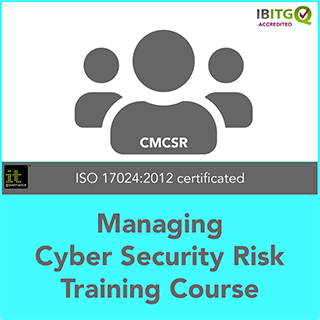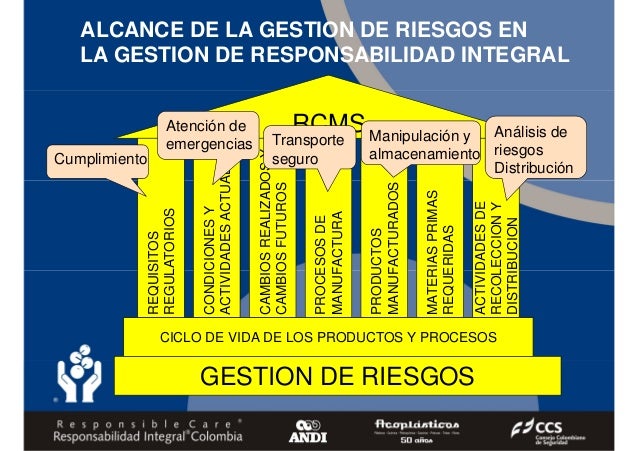Iso 27001 Lead Auditor Training Uk Government

Our ISO/IEC 27001 training courses follow a structure to help you familiarize. Auditor/Lead Auditor Training Course (BS ISO/IEC 27001. United Kingdom; Other.
© Crown copyright 2014 This publication is licensed under the terms of the Open Government Licence v3.0 except where otherwise stated. To view this licence, visit or write to the Information Policy Team, The National Archives, Kew, London TW9 4DU, or email:. Where we have identified any third party copyright information you will need to obtain permission from the copyright holders concerned. This publication is available at https://www.gov.uk/government/publications/cloud-security-guidance-standards-and-definitions/cloud-security-guidance-standards-and-definitions.
Note: This publication is in BETA. Please send any feedback to the address. This publication describes the security standards and definitions that are frequently referenced elsewhere in the. Cloud security standards This guidance refers to the following standards. Standard Guidance on certification ISO/IEC or ISO/IEC It is possible to be certified as compliant with ISO/IEC or ISO/IEC. The scope of the certification can be specified by the organisation being certified, so if you’re using these standards to assess implementation of one of more Cloud Security Principles, check that the scope covers appropriate aspects.
The individual performing this assessment should be a CCP certified ‘Accreditor’ or ‘IA Auditor’ at Senior or Lead level, or a recognised subject matter expert. In addition:. ISO/IEC 27001 certification will not verify that the controls implemented by the service provider are effective. The United Kingdom Accreditation Service (UKAS) is the only national accreditation body recognised by government to assess organisations that provide certification services.
ISO/IEC 27001 audits performed by bodies not recognised by UKAS may reduce the confidence that consumers can place in their quality. Cloud Security Alliance (CSA) Cloud Controls Matrix (CCM) v3.0 CSA CCM v3.0 compliance is achieved through CSA’s scheme, the first level of which is ‘self-assessment’. Service providers referencing STAR at this level should be considered to fall into the Service Provider Assertion category. The remaining levels of STAR (‘certification’, ‘attestation’ or ‘continuous’) should be considered to fall in the Independent validation of assertions category. As with ISO/IEC or ISO/IEC, a qualified individual (CCP certified ‘Accreditor’ or ‘IA Auditor’ at senior or lead level, or a recognised subject matter expert) should verify the scope and implementation of controls to ensure they support the Cloud Security Principles claimed. SSAE-16 / ISAE 3402 ISAE 3402, The International Standard on Assurance Engagements ‘Assurance Reports on Controls at a Service Organisation’, and SSAE 16, Statement on Standards for Attestation Engagements No. 16, replace the US Statement on Auditing Standards No 70 (SAS 70).
SSAE and ISE both require a description of the service organisation’s ‘system’ and a written assertion by management. ISO/IEC ISO/IEC gives guidelines for how to process and resolve potential vulnerability information in a product or online service. It is applicable to vendors involved in handling vulnerabilities for IT systems.
BS7858:2012 BS7858:2012 is the British Standard that specifies a Code of Practice for security screening of individuals and third party individuals to be employed in security environments by an organisation prior to their employment. ISO/IEC 27034 ISO/IEC 27034 provides guidance to assist organisations in integrating security into the process used for managing their applications. It introduces definitions, concepts, principles and processes involved in application security. ISO/PAS ISO/PAS specifies the requirements for a security management system, including those aspects critical to the security assurance of the supply chain. These aspects include finance, manufacturing, information management and the facilities for packing, storing, and transferring goods between modes of transport and locations.
Cloud security definitions This guidance uses definitions for cloud computing terminology. The key terms are described below. Term Definition Cloud computing A model for enabling ubiquitous, convenient, on-demand network access to a shared pool of configurable computing resources (eg networks, servers, storage, applications, and services) that can be rapidly provisioned and released with minimal management effort or service provider interaction. Private Cloud A cloud infrastructure provisioned for exclusive use by a single organization comprising multiple consumers (eg business units). It may be owned, managed, and operated by the organization, a third party, or some combination of them, and it may exist on or off premises. Community Cloud A cloud infrastructure provisioned for exclusive use by a specific community of consumers from organizations that have shared concerns (eg mission, security requirements, policy, and compliance considerations). It may be owned, managed, and operated by one or more of the organizations in the community, a third party, or some combination of them, and it may exist on or off premises.
Public Cloud A cloud infrastructure provisioned for open use by the general public. It may be owned, managed, and operated by a business, academic, or government organization, or some combination of them. It exists on the premises of the cloud provider. Hybrid Cloud A composition of two or more distinct cloud infrastructures (private, community, or public) that remain unique entities, but are bound together by standardized or proprietary technology that enables data and application portability (eg cloud bursting for load balancing between clouds). Software as a Service (SaaS) A capability provided to the consumer to use the provider’s applications running on a cloud infrastructure. The applications are accessible from various client devices through either a thin client interface, such as a web browser (eg web-based email), or a program interface. Platform as a Service (PaaS) A capability provided to the consumer to deploy onto the cloud infrastructure consumer-created or acquired applications created using programming languages, libraries, services, and tools supported by the provider.
Infrastructure as a Service (IaaS) A capability provided to the consumer to provision processing, storage, networks, and other fundamental computing resources where the consumer is able to deploy and run arbitrary software, which can include operating systems and applications.
© Crown copyright 2014 This publication is licensed under the terms of the Open Government Licence v3.0 except where otherwise stated. To view this licence, visit or write to the Information Policy Team, The National Archives, Kew, London TW9 4DU, or email:. Where we have identified any third party copyright information you will need to obtain permission from the copyright holders concerned.
This publication is available at https://www.gov.uk/government/publications/cloud-security-guidance-standards-and-definitions/cloud-security-guidance-standards-and-definitions. Note: This publication is in BETA. Please send any feedback to the address.
This publication describes the security standards and definitions that are frequently referenced elsewhere in the. Cloud security standards This guidance refers to the following standards. Standard Guidance on certification ISO/IEC or ISO/IEC It is possible to be certified as compliant with ISO/IEC or ISO/IEC. The scope of the certification can be specified by the organisation being certified, so if you’re using these standards to assess implementation of one of more Cloud Security Principles, check that the scope covers appropriate aspects.
The individual performing this assessment should be a CCP certified ‘Accreditor’ or ‘IA Auditor’ at Senior or Lead level, or a recognised subject matter expert. In addition:.
ISO/IEC 27001 certification will not verify that the controls implemented by the service provider are effective. The United Kingdom Accreditation Service (UKAS) is the only national accreditation body recognised by government to assess organisations that provide certification services. ISO/IEC 27001 audits performed by bodies not recognised by UKAS may reduce the confidence that consumers can place in their quality. Cloud Security Alliance (CSA) Cloud Controls Matrix (CCM) v3.0 CSA CCM v3.0 compliance is achieved through CSA’s scheme, the first level of which is ‘self-assessment’.
Service providers referencing STAR at this level should be considered to fall into the Service Provider Assertion category. The remaining levels of STAR (‘certification’, ‘attestation’ or ‘continuous’) should be considered to fall in the Independent validation of assertions category. As with ISO/IEC or ISO/IEC, a qualified individual (CCP certified ‘Accreditor’ or ‘IA Auditor’ at senior or lead level, or a recognised subject matter expert) should verify the scope and implementation of controls to ensure they support the Cloud Security Principles claimed. SSAE-16 / ISAE 3402 ISAE 3402, The International Standard on Assurance Engagements ‘Assurance Reports on Controls at a Service Organisation’, and SSAE 16, Statement on Standards for Attestation Engagements No. 16, replace the US Statement on Auditing Standards No 70 (SAS 70).
SSAE and ISE both require a description of the service organisation’s ‘system’ and a written assertion by management. ISO/IEC ISO/IEC gives guidelines for how to process and resolve potential vulnerability information in a product or online service. It is applicable to vendors involved in handling vulnerabilities for IT systems.

BS7858:2012 BS7858:2012 is the British Standard that specifies a Code of Practice for security screening of individuals and third party individuals to be employed in security environments by an organisation prior to their employment. ISO/IEC 27034 ISO/IEC 27034 provides guidance to assist organisations in integrating security into the process used for managing their applications.

It introduces definitions, concepts, principles and processes involved in application security. ISO/PAS ISO/PAS specifies the requirements for a security management system, including those aspects critical to the security assurance of the supply chain. These aspects include finance, manufacturing, information management and the facilities for packing, storing, and transferring goods between modes of transport and locations. Cloud security definitions This guidance uses definitions for cloud computing terminology. The key terms are described below. Term Definition Cloud computing A model for enabling ubiquitous, convenient, on-demand network access to a shared pool of configurable computing resources (eg networks, servers, storage, applications, and services) that can be rapidly provisioned and released with minimal management effort or service provider interaction. Private Cloud A cloud infrastructure provisioned for exclusive use by a single organization comprising multiple consumers (eg business units).
It may be owned, managed, and operated by the organization, a third party, or some combination of them, and it may exist on or off premises. Community Cloud A cloud infrastructure provisioned for exclusive use by a specific community of consumers from organizations that have shared concerns (eg mission, security requirements, policy, and compliance considerations). It may be owned, managed, and operated by one or more of the organizations in the community, a third party, or some combination of them, and it may exist on or off premises. Public Cloud A cloud infrastructure provisioned for open use by the general public. It may be owned, managed, and operated by a business, academic, or government organization, or some combination of them. It exists on the premises of the cloud provider.
Hybrid Cloud A composition of two or more distinct cloud infrastructures (private, community, or public) that remain unique entities, but are bound together by standardized or proprietary technology that enables data and application portability (eg cloud bursting for load balancing between clouds). Software as a Service (SaaS) A capability provided to the consumer to use the provider’s applications running on a cloud infrastructure. The applications are accessible from various client devices through either a thin client interface, such as a web browser (eg web-based email), or a program interface.
Bsi 27001 Lead Auditor Training
Platform as a Service (PaaS) A capability provided to the consumer to deploy onto the cloud infrastructure consumer-created or acquired applications created using programming languages, libraries, services, and tools supported by the provider. Infrastructure as a Service (IaaS) A capability provided to the consumer to provision processing, storage, networks, and other fundamental computing resources where the consumer is able to deploy and run arbitrary software, which can include operating systems and applications.